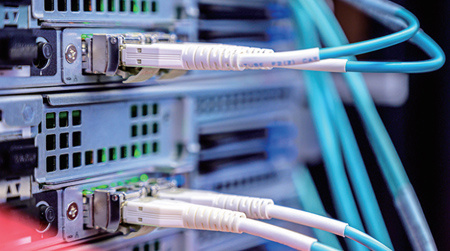27
2025
-
04
Unlocking the Power of Fiber Optic Splitters: A Deep Dive
What is a Fiber Optic Splitter?
Ever wondered how your internet connection stays fast and reliable? Well, one of the unsung heroes of modern telecommunications is the Fiber Optic Splitter. This nifty device allows a single optical fiber to split its signal into multiple paths, ensuring that data can be distributed efficiently. Think of it as a traffic cop for light signals, directing data where it needs to go!
How Does It Work?
So, here’s the scoop: when light travels through a fiber optic cable, it’s carrying information at lightning speed. A fiber optic splitter takes this single beam of light and divides it into several beams, each traveling down its own path. This is done using a clever combination of refraction and reflection. It’s like taking one pizza and slicing it up into multiple delicious pieces for your friends!
Types of Fiber Optic Splitters
Now, you might be wondering, "Are all fiber optic splitters created equal?" Well, not quite! There are a few types to consider:
- Fused Biconical Taper (FBT) Splitters: These are made by fusing two or more fibers together and tapering them down. They are cost-effective but can have some loss in signal quality.
- Planar Lightwave Circuit (PLC) Splitters: These bad boys are more advanced. They offer low loss and high performance, making them ideal for larger networks.
- Wavelength Division Multiplexing (WDM) Splitters: If you want to maximize bandwidth, these splitters are your best bet. They allow multiple wavelengths to be transmitted simultaneously, increasing efficiency.
Applications in Real Life
Wondering where you’ll find these fiber optic splitters in action? Look no further than your local telecommunications provider! They’re used in:
- Telecom Networks: From cell towers to broadband, splitters are crucial for distributing signals.
- Data Centers: These facilities rely on splitters to manage vast amounts of data efficiently.
- Broadcasting: TV and radio stations use fiber optic splitters to send signals to multiple locations.
Advantages of Using Fiber Optic Splitters
Alright, let’s break it down: why should you care about fiber optic splitters? Here’s the lowdown:
- Cost-Effective: They reduce the need for multiple fibers, saving you money.
- Scalability: Need to expand? No problem! You can easily add more connections without a major overhaul.
- Low Signal Loss: Especially with PLC splitters, you get a better quality signal over longer distances.
Challenges and Considerations
But hey, it’s not all sunshine and rainbows! There are a few challenges to keep in mind:
- Installation: Proper installation is key; poorly installed splitters can lead to significant signal loss.
- Cost of Quality: While some splitters are cheap, investing in high-quality options may save you headaches down the road.
The Future of Fiber Optic Splitters
Looking ahead, the future of fiber optic splitters seems bright! With the demand for faster internet and more robust networks, innovations are on the horizon. Researchers are exploring even more efficient designs and materials that could revolutionize the way we connect.
In Summary
In a nutshell, fiber optic splitters are pivotal in making our digital lives easier. They help bridge the gap between single fiber connections and the multitude of devices we rely on every day. So, the next time you’re streaming your favorite show or video chatting with a friend, remember the little splitter that made it all possible!
Relevant news
CONTACT US
Add: No.1 Yonghe Third Road, Industrial Functional Zone, Chengdong Street, Yueqing City, Wenzhou City, Zhejiang Province
Tel: +86-577-62315998
Wechat : +86-15067871794
Fax: +86-577-62328331
E-mail: bonnie.chen@ouyahua.com











